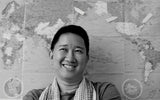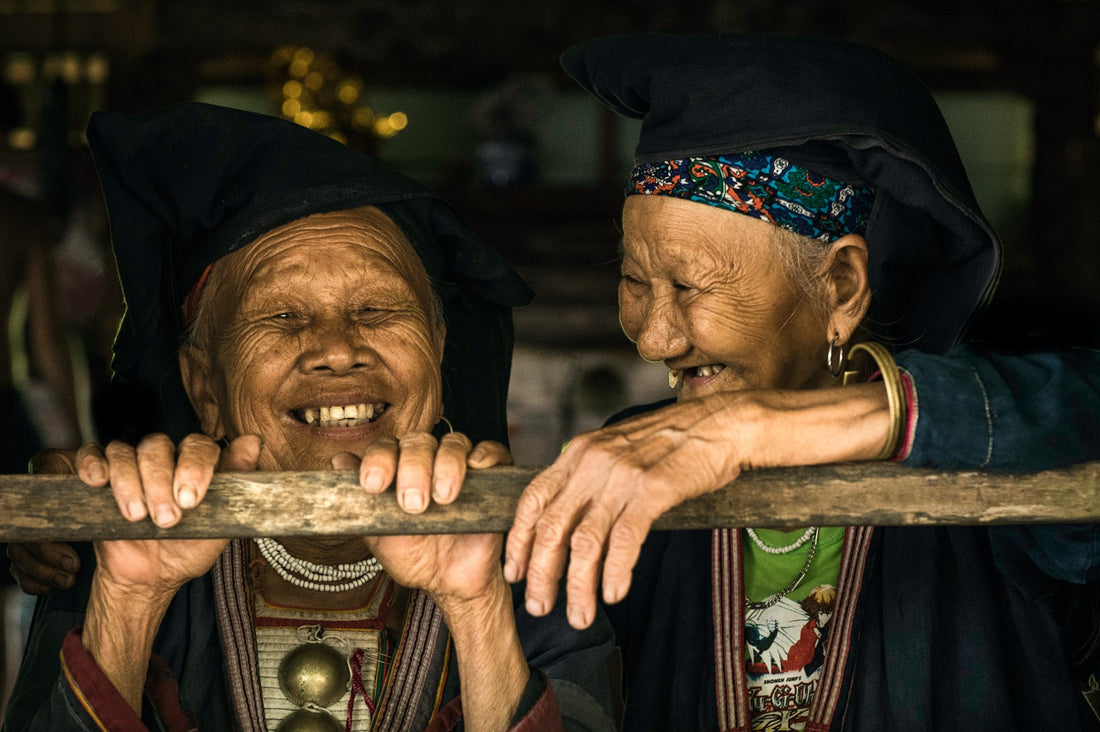At first glance, Vietnam’s population might seem like a rather homogeneous one. The same language is spoken throughout the country (barring slight variations in pronunciation by region) and to a non-discerning eye, Vietnamese people share similar physical traits, with little to differentiate a Hanoian from a Saigonese.
However, for culturally curious souls, Vietnam has a rich and diverse tapestry of ethnicities and cultures not found in most guidebooks just waiting to be explored.

While the majority of Vietnamese identify themselves as “Kinh”, tucked away in the country’s lightly-touristed highlands, coastal regions, and in quiet villages throughout the Mekong Delta, are approximately 14 million people who belong to one of Vietnam’s 53 other ethnic minority groups, many with distinct languages, fascinating histories, and rich cultures.
In the larger cities, members of these groups can often be found in small ethnic enclaves far from the typical tourist areas, bounded together by the draw of better education and jobs. If casual visitors do interact with ethnic minorities, it’s likely to be in the hills of Sapa in Vietnam’s north, where many H’Mong and other minority women and children leave their homes in the terraced rice fields to sell trinkets to tourists.

It was here in 2011 that French photographer Réhahn had his first serendipitous encounter with Vietnam’s ethnic groups. “Initially, when I moved to Vietnam, I was interested in visiting and photographing the epic landscapes that the country is known for; however, the more I started to travel the more I realized how rich and diverse the different cultures are depending on the region that I was in,” he explained to Ethnotek. “The first ethnic groups I met were the Dao and the H’Mong in Sapa and I was intrigued by the differences in their traditional costumes and language. I wanted to learn more to truly understand the heritage of this beautiful country.”
That first contact served to whet Réhahn’s cultural appetite. “Little by little I met more groups and each time it was like looking through a small part of a window but not being able to see the whole picture. When I finally decided to attempt to meet all 54 officially documented groups the rest of the project fell into place.”

Based in Hoi An, Vietnam, Réhahn’s nearly decade-long quest to meet, photograph, and document all of Vietnam’s ethnic groups recently came to an end this summer when he met members of the 54th and final group. The result of this Herculean task is the Precious Heritage Museum, a simple yet meaningful 500 sqm space opened in early 2017 dedicated to showcasing the entire range of Vietnam’s ethno-cultural diversity.

“I feel that knowledge can create understanding,” Réhahn says of the motivation behind his project. “My goal is to document these 54+ different cultures with respect so that others can witness the beauty of their traditions.”
The museum offers free entrance to view Réhahn’s mesmerizing portraits as well as rare costumes and artefacts from the groups he’s visited in hopes that increased interest in these minority groups may encourage them to maintain their traditional yet fast-disappearing way of life.
His photographic journey has taken him to extremely remote areas of Vietnam, searching for tribes with only a handful of remaining members. Asked which group left the biggest impression on him, Réhahn told Ethnotek: “It’s hard to choose one group because there are so many that have enriched my journey. As part of my Giving Back project I built a museum for one ethnic group called the Co Tu because I was inspired by their passion to preserve their culture. I visit them often because they live near my home in Hoi An. I was also touched by some of the smallest tribes such as the O Du and the Brau because their dwindling populations mean that their languages and cultural traditions risk disappearing over time.”

His travels have resulted in some incredible images, providing a rare glimpse into scenes few are privileged to witness. One image that deeply resonated with us shows an intimate moment between a young M’Nông girl (taken near Dak Lak, in Vietnam’s Central Highlands) and her elephant, a clear bond of complete trust between the two.

While some of Réhahn’s images capture children, he’s best known for his portraits of elderly men and women who are bursting with personality, wisdom and stories. “I like very old people with wrinkles and a beard that takes 30 years to grow,” he says. When he enters a village, he’ll also look for older ones because they’re typically the only ones still wearing traditional costumes featuring handmade textiles which often feature dyed hemp using natural indigo dye and intricate needlework or even batik.

“I know from my travels that Vietnam is quickly in the process of changing and developing,” he told My Modern Met. “I believe that it is important to create a record of Vietnam now. It is a rare moment in history to find a country so open to the world but still containing an incredible amount of diversity and untouched terrain.”
However, that window into areas virtually untouched by the outside world is quickly closing. “Many of the tribes are being confronted with new access to the modern world as roads are built closer and closer to their tribal lands. It is a challenge for the ethnic groups to try to find the balance between technology like smartphones and the internet, and the old ways of their culture. Some of their ancient traditions are already on the way to disappearing. Everything has two sides. Tourism can help the tribes get more income for their villages but it can also change, and even erase, the culture.”
If in Hoi An, visit the Precious Heritage Museum at 26 Phan Boi Chau, a quiet, leafy street known for its many colorful art galleries just east of the Hoi An Market.
While many of Vietnam's ethnic minority groups are tucked away in difficult-to-reach places, here are some ways to enjoy authentic experiences with relatively minimal fuss:
* In the Mekong Delta, south of Ho Chi Minh City, there's a vibrant Khmer community based in Can Tho, the Delta's largest city. Just minutes from the Cambodian border, the riverside town of Chau Doc is also home to a few Cham villages, complete with mosques and communal halls.
* In Dalat, hire a guide and driver (motorbike tours are also available) for the day and explore the lovely countryside filled with waterfalls and greenhouses. Many of the coffee plantations are owned by the Co Ho tribe, some of the original residents of the area before it became a French hill station during colonial times.
* In Vietnam's north, why not book a homestay with a local H'mong family and see first-hand how they live? The options are incredibly varied, from multi-room, dorm-style buildings to single family homes set right in the middle of the terraced rice fields. Closer to Hanoi, the Mai Chau Valley is home to the White Thai with their unique stilt homes. Mai Chau is fast becoming known as an adventure destination, where cultural visits can be combined with outdoor activities including kayaking, rock climbing and caving.
All images republished with permission from Rehahn.
About the author
 James Pham is a writer, editor, and photographer based in Ho Chi Minh City, Vietnam. When not writing about travel, food, culture, and tennis for the likes of Lonely Planet, Oi Vietnam, and Sports Illustrated, he can be found practicing his backhand or splurping down a bowl of noodles. Follow him on Instagram or read more of his articles for Ethnotek.
James Pham is a writer, editor, and photographer based in Ho Chi Minh City, Vietnam. When not writing about travel, food, culture, and tennis for the likes of Lonely Planet, Oi Vietnam, and Sports Illustrated, he can be found practicing his backhand or splurping down a bowl of noodles. Follow him on Instagram or read more of his articles for Ethnotek.

